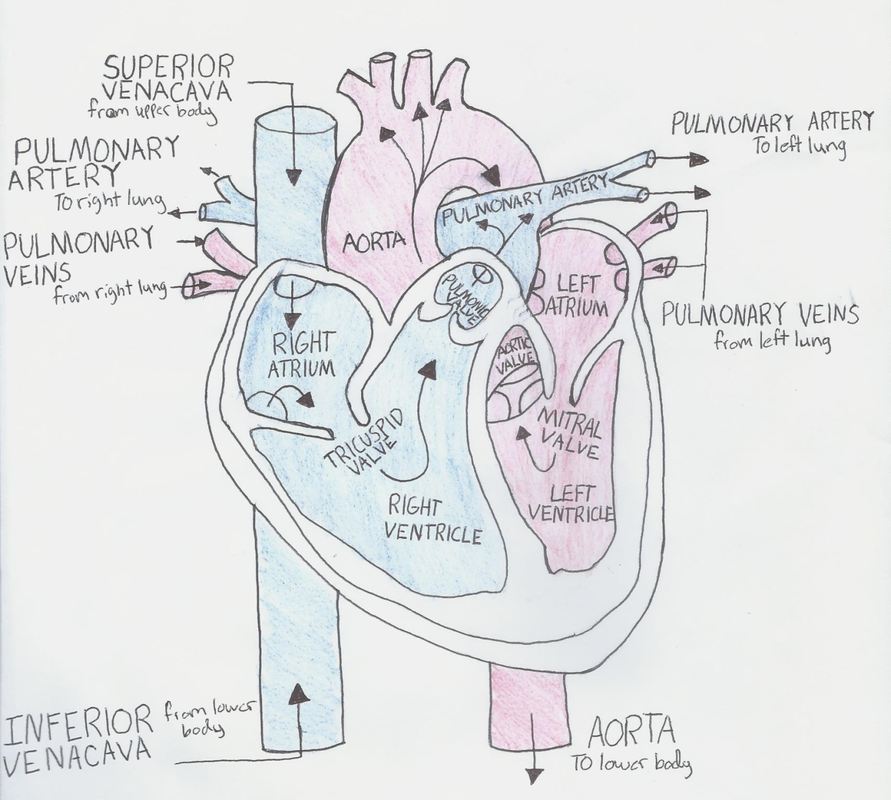Unit 4
The tissue level of organization
Reading
Ch. 4 "Tissue Level of Organization".
Ch. 4 "Tissue Level of Organization".
| Tissue structure & function slides |
Tissue lab: The sheep's heart dissection lab is an excellent way to see how the body's cells differentiate into several types of tissues, which in turn make up a complex organ
Lecture
This chapter covers the four types of tissues and what they do...
...and the five types of Cell Junctions and what they do
This chapter covers the four types of tissues and what they do...
- Epithelial
- Connective
- Muscular
- Nervous
...and the five types of Cell Junctions and what they do
- Tight (stitching)
- Adherens (belts)
- Desmosomes (spot welds)
- Hemidesmosomes (spot welds)
- Gap (little tunnels)
Tissue Structure & Function questions
| 4._tissue_structure_and_function_questions_2021.docx |
Sheep's Heart Dissection lab
Print and bring the student handout (below) to class for use during the lab
Print and bring the student handout (below) to class for use during the lab
| 4._heart_dissection_lab_handout_2021.pdf |
| 4._heart_dissection_lab_report_instructions_2021.docx |
| 4._heart_dissection_lab_report_-_student_examples.pdf |
| heart_dissection_lab_report_-_more_student_examples.pdf |
Heart Quiz
| heart_quiz_answer_key.pdf |
| heart_quiz_without_answers.pdf |
"Heart & Circulatory System" presentation
Presentation topic: "The Heart and Circulatory System".
This is to be a 5-6 minute PowerPoint presentation which you will give at an upcoming class. You can use PowerPoint, Google Slides, Prezi, and so on.
Read the detailed instructions for "class presentations" posted in Canvas under the "Heart and Circulatory System" assignment. I'm not going to repeat these for each & every presentation we do in this class, so bookmark them or copy them somewhere so you can refer back to them.
Your presentation should be suitable for an Anatomy class. Use correct Anatomical terms. Examples: you can make your presentation on things such as heart disease, pacemakers, artificial hearts, blood-borne infectious diseases (HIV, hepatitis B or C), how smoking and alcohol affect the heart, how SARS CoV-2 affects the heart and circulation, how the Covid-19 vaccines might affect the heart, recent developments in heart valves, how heart muscles work, the heart’s electrical system, cardiac tissue engineering, Sickle Cell Anemia, Leukemia, other diseases of the blood, new drugs or drugs under development, and so on.
Presentation topic: "The Heart and Circulatory System".
This is to be a 5-6 minute PowerPoint presentation which you will give at an upcoming class. You can use PowerPoint, Google Slides, Prezi, and so on.
Read the detailed instructions for "class presentations" posted in Canvas under the "Heart and Circulatory System" assignment. I'm not going to repeat these for each & every presentation we do in this class, so bookmark them or copy them somewhere so you can refer back to them.
Your presentation should be suitable for an Anatomy class. Use correct Anatomical terms. Examples: you can make your presentation on things such as heart disease, pacemakers, artificial hearts, blood-borne infectious diseases (HIV, hepatitis B or C), how smoking and alcohol affect the heart, how SARS CoV-2 affects the heart and circulation, how the Covid-19 vaccines might affect the heart, recent developments in heart valves, how heart muscles work, the heart’s electrical system, cardiac tissue engineering, Sickle Cell Anemia, Leukemia, other diseases of the blood, new drugs or drugs under development, and so on.
| Heart & Circulatory System presentations - student examples |
Henrietta Lacks case study
HeLa cells are cervical cancer cells isolated from a woman named Henrietta Lacks. Her cells have been cultured since 1951 and used in numerous scientific experiments. Henrietta Lacks died from her cancer not long after her cells were isolated. Lacks' cancer cells contain remnants of human papillomavirus (HPV), which we now know increases the risk of cervical cancer.
HeLa cells are cervical cancer cells isolated from a woman named Henrietta Lacks. Her cells have been cultured since 1951 and used in numerous scientific experiments. Henrietta Lacks died from her cancer not long after her cells were isolated. Lacks' cancer cells contain remnants of human papillomavirus (HPV), which we now know increases the risk of cervical cancer.
| 4._henrietta_lacks_case_study_oct._2021.docx |

